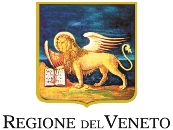SISC has expanded its program by involving high school students in two activities developed to introduce them to the world of climate science. Both activities are addressed to senior class students of the selected schools in the organizational phase of the SISC Conference.
Climate change: scenarios, impacts and policies
Introductory lecture at the Second Annual SISC Conference
Prof. Andrea Gambaro, Department of Environmental Sciences, Computer Science and Statistics
Monday, September 29, 2014, 9:00 (tbc)
Università Ca’ Foscari, Venezia
Aula Baratto
A few years ago, when the longest paleoclimatic reconstruction ever carried out through the study of polar ice cores, the prestigious scientific journal, Nature, commented on the article by renaming it The Day Before Yesterday. In fact, the film The Day After Tomorrow had recently been released, which describes the effects of climate change in a rather catastrophic manner. However, if we want to put the ongoing climate change into perspective and properly develop forecasting models that help us understand what the possible future scenarios might be, it is essential to understand the natural mechanisms that govern climate processes. Unfortunately climatologists do not have access to direct information on the climate of the past, so they try to rebuild it indirectly through chemical and physical traces left in some climatic and environmental archives such as marine and lake sediments and polar ice. These reconstructions are very complex and it is difficult to interpret them. However, reconstructions of past climates are based on these archives that lead us to discover some interesting information on how the climate has changed over the past centuries. Regarding the studies on the current climate change, the international scientific community in recent years has devoted increasing attention to the study of atmospheric aerosol because of its importance on human health and its influence exerted on “global change”. In fact, aerosol both directly and indirectly influences the climate. Therefore, recent studies on atmospheric aerosols as well as on the climate and environmental archives will be presented.
Visit the museum of science
Monday, September 29, 2014, 11:30 (tbc)
Antonio Maria Traversi Museum of Physics
c/o Liceo Classico Marco Foscarini
Cannaregio, 4942 – 30131 Venezia
The measurement of physical characteristics is the basis of applied sciences. At the Traversi Museum collection, students will be able to see the historic equipment, which was used to study the Earth’s atmosphere, and to measure the pressure, temperature and humidity of the air. Some of this equipment works in the same way as their modern equivalents.



















